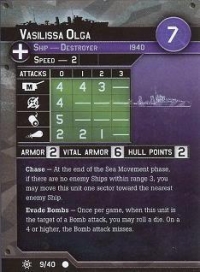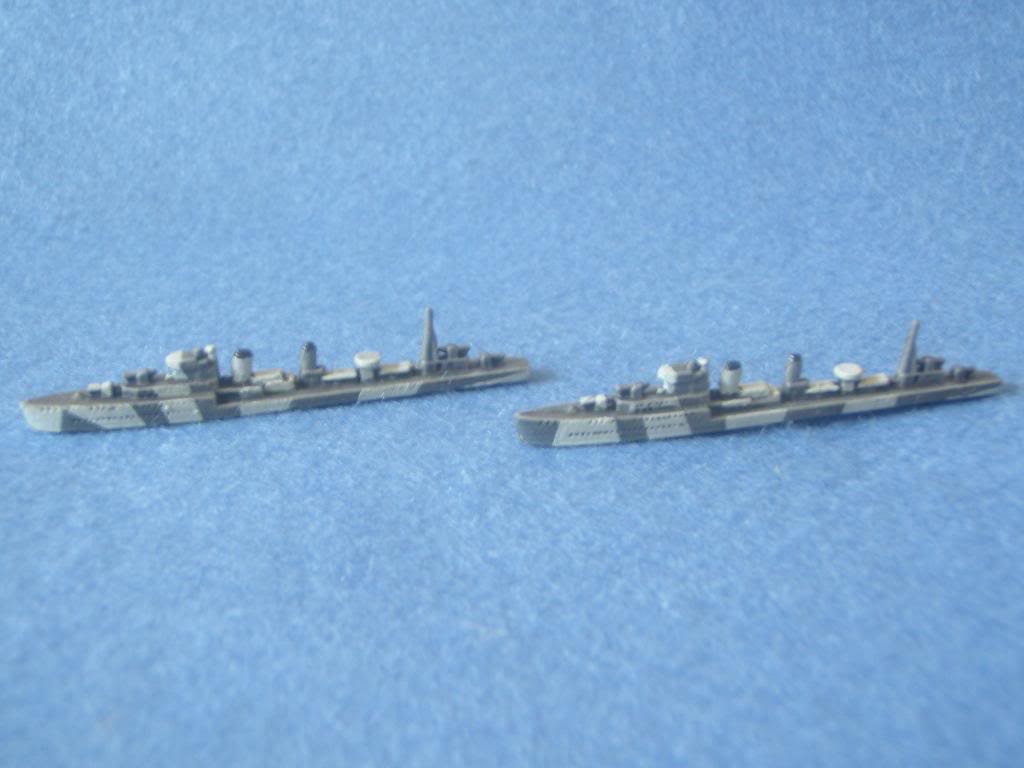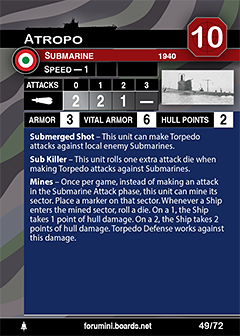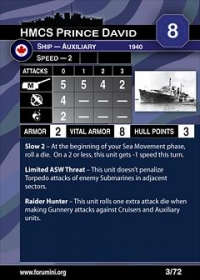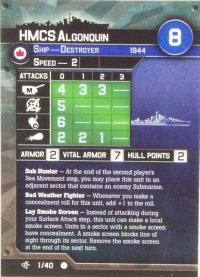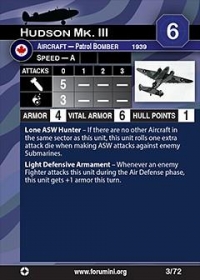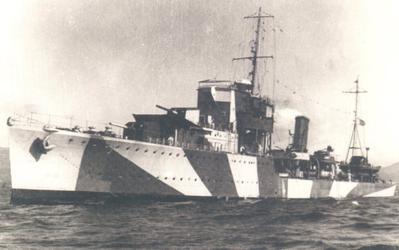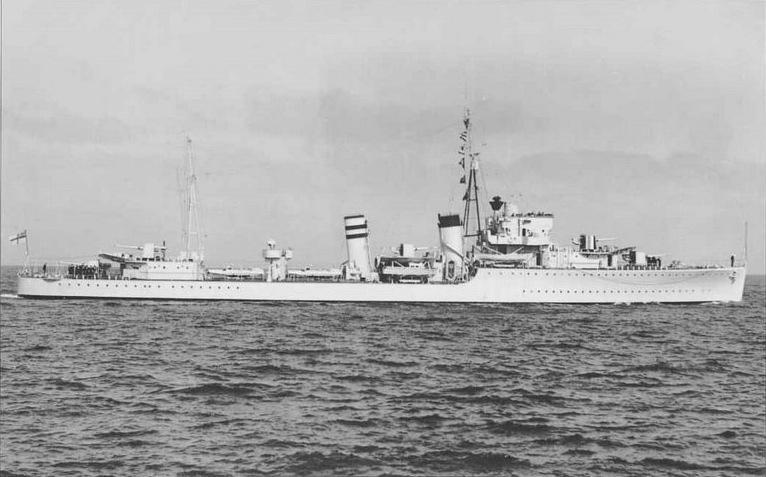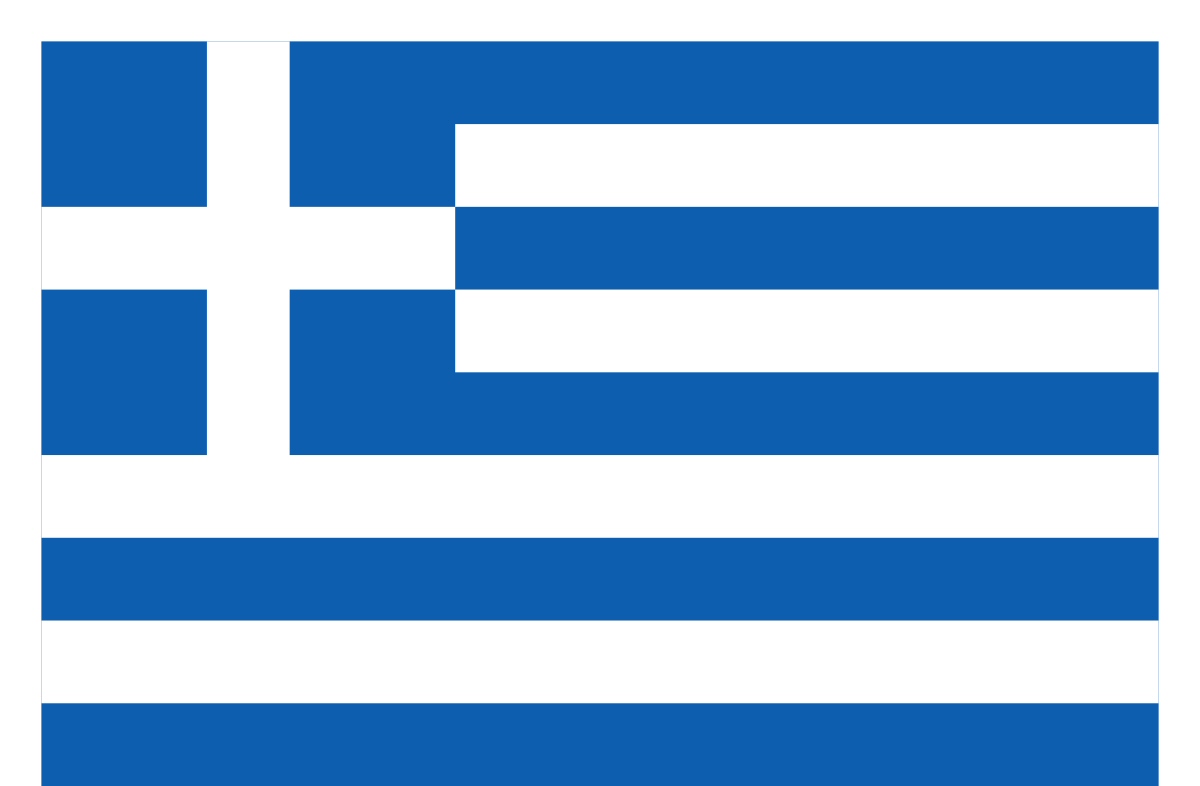Prototype: Vasilissa Olga (Greek: ΒΠ Βασίλισσα Όλγα) (Queen Olga) was the second and last destroyer of her class built for the Royal Hellenic Navy in Great Britain before the Second World War. She participated in the Greco-Italian War in 1940–1941, escorting convoys and unsuccessfully attacking Italian shipping in the Adriatic Sea. After the German invasion of Greece in April 1941, the ship escorted convoys between Egypt and Greece until she evacuated part of the government to Crete later that month and then to Egypt in May. After the Greek surrender on 1 June, Vasilissa Olga served with British forces for the rest of her career.
She escorted convoys in the Eastern Mediterranean for the next several months before she was sent to India for a refit. The ship resumed convoy escort duties upon its completion at the beginning of 1942 in the Mediterranean and the Red Sea. In December of that year, now operating in the Central Mediterranean, Vasilissa Olga and a British destroyer briefly captured an Italian submarine, but it sank while under tow. The following month, the ship, together with a pair of British destroyers, sank a small Italian transport ship. She was briefly tasked to escort an Australian troop convoy in the Red Sea in February 1943 before returning to the Mediterranean. Together with a British destroyer, Vasilissa Olga sank at least two ships from an Italian convoy in June. Over the next several months, she escorted British ships as the Allies invaded Sicily (Operation Husky)and mainland Italy (Operation Avalanche).
The ship was transferred back to the Eastern Mediterranean in September to participate in the Dodecanese Campaign. Together with two British destroyers, she helped to destroy a small German convoy in the islands before beginning to ferry troops and supplies to the small British garrison on the island of Leros. After completing one such mission, she was sunk by German bombers in Lakki harbor on 26 September with the loss of 72 men.
She escorted convoys in the Eastern Mediterranean for the next several months before she was sent to India for a refit. The ship resumed convoy escort duties upon its completion at the beginning of 1942 in the Mediterranean and the Red Sea. In December of that year, now operating in the Central Mediterranean, Vasilissa Olga and a British destroyer briefly captured an Italian submarine, but it sank while under tow. The following month, the ship, together with a pair of British destroyers, sank a small Italian transport ship. She was briefly tasked to escort an Australian troop convoy in the Red Sea in February 1943 before returning to the Mediterranean. Together with a British destroyer, Vasilissa Olga sank at least two ships from an Italian convoy in June. Over the next several months, she escorted British ships as the Allies invaded Sicily (Operation Husky)and mainland Italy (Operation Avalanche).
The ship was transferred back to the Eastern Mediterranean in September to participate in the Dodecanese Campaign. Together with two British destroyers, she helped to destroy a small German convoy in the islands before beginning to ferry troops and supplies to the small British garrison on the island of Leros. After completing one such mission, she was sunk by German bombers in Lakki harbor on 26 September with the loss of 72 men.
Class History: The G- and H-class destroyers were a group of 18 destroyers built for the Royal Navy during the 1930s. Six additional ships being built for the Brazilian Navy when World War II began in 1939 were purchased by the British and named the Havant class. The design was a major export success with other ships built for the Argentine and Royal Hellenic Navies. They were assigned to the Mediterranean Fleet upon completion and enforced the Non-Intervention Agreement during the Spanish Civil War of 1936–39.
Most ships were recalled home or were sent to the North Atlantic from October–November 1939, after it became clear that Fascist Italy was not going to intervene in World War II. Then they began to escort convoys and patrol for German submarines and commerce raiders. Two ships were lost to German mines in the first six months of the war. Three more were lost during the Norwegian Campaign, one in combat with a German cruiser and two during the First Battle of Narvik in April 1940. The Battle of France was the next test for the destroyers from May–June, with many of the Gs and Havants participating in the evacuation of Dunkirk and the subsequent evacuations of Allied troops from western France. Three ships were sunk, two by bombs and the other to torpedoes. Most of the H-class ships were sent to the Mediterranean in May in case Mussolini decided to attack France and the majority of the surviving Gs were sent to Force H at Gibraltar in July. Several of them participated in the Battle of Dakar, before being assigned to the Mediterranean Fleet with their sister ships. By the end of the year, the ships participated in several battles with the Royal Italian Navy, losing two to Italian mines and torpedoes, while sinking two Italian submarines. The Havants spent most of the war in the North Atlantic on convoy escort duties, losing half their number to German submarines, while helping to sink six in exchange by the end of the war.
Most ships were recalled home or were sent to the North Atlantic from October–November 1939, after it became clear that Fascist Italy was not going to intervene in World War II. Then they began to escort convoys and patrol for German submarines and commerce raiders. Two ships were lost to German mines in the first six months of the war. Three more were lost during the Norwegian Campaign, one in combat with a German cruiser and two during the First Battle of Narvik in April 1940. The Battle of France was the next test for the destroyers from May–June, with many of the Gs and Havants participating in the evacuation of Dunkirk and the subsequent evacuations of Allied troops from western France. Three ships were sunk, two by bombs and the other to torpedoes. Most of the H-class ships were sent to the Mediterranean in May in case Mussolini decided to attack France and the majority of the surviving Gs were sent to Force H at Gibraltar in July. Several of them participated in the Battle of Dakar, before being assigned to the Mediterranean Fleet with their sister ships. By the end of the year, the ships participated in several battles with the Royal Italian Navy, losing two to Italian mines and torpedoes, while sinking two Italian submarines. The Havants spent most of the war in the North Atlantic on convoy escort duties, losing half their number to German submarines, while helping to sink six in exchange by the end of the war.
Country: Greece is a country in southeastern Europe with thousands of islands throughout the Aegean and Ionian seas. Influential in ancient times, it's often called the cradle of Western civilization. Athens, its capital, retains landmarks including the 5th-century B.C. Acropolis citadel with the Parthenon temple. Greece is also known for its beaches, from the black sands of Santorini to the party resorts of Mykonos.
Item created by: Lethe on 2015-05-31 17:46:30. Last edited by gdm on 2019-07-30 18:50:15
If you see errors or missing data in this entry, please feel free to log in and edit it. Anyone with a Gmail account can log in instantly.
If you see errors or missing data in this entry, please feel free to log in and edit it. Anyone with a Gmail account can log in instantly.


